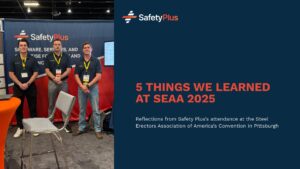Alternatives to OSHA’s Silica Table 1
2017 OSHA Silica Rule: 29CFR 1926.1153
Introduction
For many years, health professionals have known that breathing crystalline silica poses significant health risks for workers. In fact, over 40 years ago, NIOSH (National Institute for Occupational Safety & Health) recommended this exact permissible exposure limit to OSHA. You need to know that there is indeed sound science that indicates that breathing of silica particles is linked to lung cancer, silicosis, Chronic Obstructive Disease (COPD), and illnesses of the kidneys. Unfortunately, some cases have occurred while employers were observing previous OSHA exposure limits. While most of us murmur about the unfairness or at least the un-favorableness of regulations in general, one would be hard pressed to contest historic over-exposures given the available current data. This discussion assumes that the reader understands basic employee respiratory protection protocols, is not adopting Table 1’s(*) protocols, and is primarily interested in developing a reasonable and sustainable program that complies with the current requirements. This discussion is not intended to elaborate on medical clearances, respirators, or ancillary requirements that are triggered once over-exposure is validated.
Overview
In its most fundamental form, the 2017 silica rule asks employers to either use pre-approved methods & protections for certain common tasks or conduct regular testing to validate that no over-exposure exists. Most of the objections we hear are about OSHA halving the permissible exposure limit (PEL) to 50 micrograms of respirable crystalline silica per cubic meter of air. The real issue, however, is that at the new Action Level of 25 ug/m3, employers are required to take specific actions. Those who argue that compliance with the new federal silica standard is unobtainable, costly, and disruptive are missing an opportunity to make improvements in workplace safety without an unreasonable amount of effort for employers. Since the early 1990’s, to address over-regulation concerns and to allow employers the ability to craft workplace-specific compliance solutions, OSHA began using performance-based standards. Custom performance-base solutions are still allowable under the new standard if proper atmospheric testing is conducted to verify effectiveness of non-authorized controls or under-exposure.
Water Water Water
As with many new mandates, the remedy is less likely to be a complete rewrite of existing practices, as opposed to fine-tuning what should have already been done in the first place. In most cases, instead of recommending the purchase of elaborate technologies to reduce airborne concentrations to acceptable levels, Safety Plus regularly finds that common solutions, such as water applied at the source, work in many more applications than was initially apparent. Furthermore, OSHA crafted this rule to encourage its use.
Vacuum-based Technology
Engineering control requirements such as vacuum technologies have needlessly alarmed many in affected industries. While some applications will require more advanced equipment, it does not appear that most construction exposures will warrant such complex approaches. When companies cannot use water to control the generation of airborne silica ducts, ordinary shop vacuums may be effectively used if they are properly equipped and handled. The atmospheric testing’s Safety Plus has done indicate that using HEPA filters & pre-filtering on commercially available shop-type vacuums are extremely effective at removing air-borne crystalline silica to levels significantly below the new PEL, and in many cases the Action Level. This is accomplished at the source of generation while maintaining acceptable production levels. While care, wetting, and precautions, which can be discussed later, must be adhered to when changing filters or emptying bags, the common ShopVac™ has proven to be a workable and low-cost solution in a majority of common construction applications. It should be noted that many times, the above noted precautions are required with even the most sophisticated dust control systems. Our results seem to indicate that compliance costs & un-productive manpower estimates may have been grossly over-stated.
Alternate Control methods: Disregarding Table 1
For tasks not listed, control methods not adhered to, or when employers do not properly implement effective engineering controls or practices listed in Table 1, there are several methods available that offer compliance, which will likely be sufficient for many situations. First, remember that employers must ensure that workers are not exposed to greater than the PEL of 50 ug/m3, for an 8-hr TWA. This is verified through valid testing. Since these tests are relatively inexpensive and will serve to establish future PPE requirements, Safety Plus recommends initial and scheduled verification testing in accordance with 1926.1153 (d)(2)(iii)(B-E), for each task/employee type that deviates from Table 1. These tests, if in line with acceptable exposure levels and correctly performed, will usually satisfy the standard’s “Exposure Assessment” as well as the “Performance Option” & “Scheduled Monitoring” requirements for Table 1 deviation.
When initial monitoring results, at the breathing zone, are less than 25 ug/m3, the employer may discontinue monitoring, until conditions or exposure scenarios change. Note that this option is only valid for the distinct exposures that were tested for and is not applicable to similar work or exposures.
Where initial monitoring indicates that employees are exposed to concentrations above the action level of 25 ug/m3, but below the Permissible Exposure Level of 50ug/m3, the employer must repeat the monitoring every six months to validate the acceptable exposure levels. If a monitoring result that is below the Action Level is achieved, testing must re-occur, at least a week apart, until two consecutive acceptable levels are obtained, to suspend monitoring. Again, these options are only valid for exact exposures that are tested for, and are not applicable to similar work or exposures. In this scenario, Safety Plus recommends offering N-95 dust masks or half-face HEPA respirators to workers for voluntary use in accordance with the company’s respiratory protection program.
While OSHA offers employers options for addressing test results above the Permissible Exposure Limit of 50 ug/m3, Safety Plus does not recommend deviating from the Table 1 protocols in those circumstances. In the event of a non-Table 1, listed task, initial, scheduled, and reassessment monitoring, compliant with (d)(2)(iii)(E) of the standard, must be completed once company-specific engineering controls are implemented.
Since respiratory protection is an integral part of silica exposure mitigation, the reader should be mindful that additional respiratory program requirements will likely become obligatory under most any silica compliance scenario. If workers are likely to use respirators for silica protection for more than 30 days per year, the company must also offer enhanced medical clearances. I would like to mention that when developing a workable system for complying to Table 1, we find it typically much more operationally efficient and sustainable to disregard the minimum task time-limits in the standard and adhere to the maximum exposure criteria requirements. In this way companies avoid the need to track affected task times, provide more protection for the lesser exposures, and minimize non-productive manhours that would be expended on time-tracking and respiratory compliance. When complications with task time-tracking become clear, most companies agree that it is much easier and less costly to simply apply the higher threshold for PPE protection across the board.
Summary
While the silica standard is generating a lot of attention, the main effect will be the expansion of some companies’ respirator & atmospheric testing programs. In the event that testing reveals exposure levels of less than 25 ug/m3, only periodic monitoring is required. Safety Plus is of the opinion that all but the most extreme exposures can be brought to below the action level with minimal effort. Companies who do not wish to follow Table 1 can, with a scheduled monitoring program, and possibly some minor engineering controls, keep silica level below the new permissible exposure limit.
Recommended Reading
National Safety Month: Reducing Preventable Injuries and Deaths
Every June, National Safety Month reminds us that many injuries and deaths are preventable, whether at work, at home, or on the road. While safety should be a priority throughout the year, this annual initiative gives everyone a chance to slow down, evaluate risks, and take steps to mitigate them. Job site injuries, car accidents,…
The Hidden Costs of Workplace Incidents (and How to Avoid Them)
Workplace incidents can be costly on multiple fronts, from direct costs like medical and legal fees to indirect costs like lost productivity and reputational damage. The ripple effect of a workplace injury or death can last far beyond the incident itself, eating away at profitability and damaging a company’s reputation. However, the right safety measures…
Partner Spotlight: MASC Safety Consulting – Machine Safety & Compliance Expertise for High-Hazard Operations
At Safety Plus, we recognize the critical importance of machine safety and regulatory compliance in industrial operations. To support our clients in achieving these objectives, we are proud to spotlight MASC Safety Consulting, a firm that provides comprehensive safety services tailored to industrial operations. Featured Resource: Comprehensive Machine Safety Services Available Through Our Partner Network…
5 Things We Learned at SEAA 2025
Reflections about trends in the steel erection industry from Safety Plus’s attendance at the Steel Erectors Association of America’s Convention and Trade Show in Pittsburgh The 2025 SEAA Convention & Trade Show in the Steel City of Pittsburgh was nothing short of inspiring! Safety Plus was humbled to sponsor and exhibit at this event for the…
SAFETY MANAGEMENT SIMPLIFIED
Prevent Tragedy and Scale Effectively by Making Safe Work Efficient




